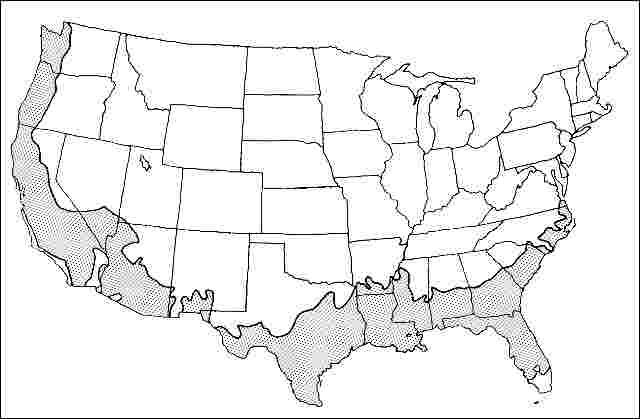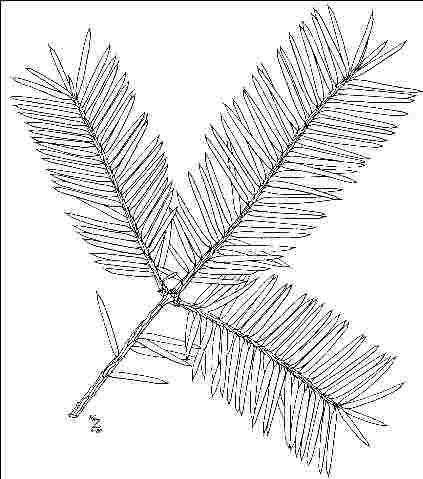Introduction
This upright, pyramidal, evergreen tree has fine-textured, drooping branches armed with sharp-pointed, needle-like, glossy, dark green leaves. The leaves give off a strong odor of turpentine (or tomato plant) when crushed. Florida torreya can reach a height of 40 feet with a 20-foot spread and has a slow growth rate. It is native to the wooded slopes and ravines along the eastern bank of the Appalachicola River in western Florida and is extremely rare in the wild. More widespread use of this native tree will help save it from extinction.

General Information
Scientific name: Torreya taxifolia
Pronunciation: TOR-ee-uh tack-sih-FOLE-ee-uh
Common name(s): Florida torreya, stinking yew
Family: Taxaceae
USDA hardiness zones: 8A through 9B (Fig. 2)
Origin: native to North America
Invasive potential: little invasive potential
Uses: specimen
Availability: not native to North America

Description
Height: 10 to 20 feet
Spread: 15 to 25 feet
Crown uniformity: irregular
Crown shape: pyramidal
Crown density: moderate
Growth rate: slow
Texture: fine
Foliage
Leaf arrangement: alternate (Fig. 3)
Leaf type: simple
Leaf margin: entire
Leaf shape: linear
Leaf venation: parallel
Leaf type and persistence: needled evergreen, evergreen, fragrant
Leaf blade length: less than 2 inches
Leaf color: green
Fall color: no color change
Fall characteristic: not showy

Flower
Flower color: no flowers
Flower characteristics: no flowers
Fruit
Fruit shape: cone, round
Fruit length: .5 to 1 inch, 1 to 3 inches
Fruit covering: fleshy
Fruit color: purple
Fruit characteristics: does not attract wildlife; not showy; fruit/leaves not a litter problem
Trunk and Branches
Trunk/bark/branches: branches droop; not showy; typically one trunk; thorns
Pruning requirement: needed for strong structure
Breakage: resistant
Current year twig color: green
Current year twig thickness: thin
Wood specific gravity: 0.51
Culture
Light requirement: partial sun or partial shade
Soil tolerances: clay; sand; loam; acidic; well-drained
Drought tolerance: moderate
Aerosol salt tolerance: none
Other
Roots: not a problem
Winter interest: no
Outstanding tree: no
Ozone sensitivity: unknown
Verticillium wilt susceptibility: unknown
Pest resistance: sensitive to pests/diseases
Use and Management
Florida torreya prefers partial shade and well-drained, slightly acid, fertile soil. Plants should be watered faithfully and fertilized once in winter. Encourage use of this plant by placing it in a prominent location in a park, golf course, or other public area.
Propagation is by cuttings. Mature wood cuttings taken in winter root well. Seeds, when available, germinate slowly and sporadically.
Pests
Scales can be found infesting the twigs and foliage.
Diseases
Mushroom root rot and blight will infect some landscape plantings.